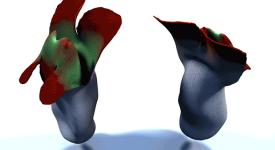Understanding the Mathematical Foundations Behind Challenging Puzzle Design

02/01/2024 - Researchers from The University of Texas at Austin and McGill University delve into the mathematical intricacies of wire puzzle design. Focusing on geometrical aspects, they establish criteria for puzzle characteristics, emphasizing the importance of a challenging experience. The team introduces quantitative metrics to assess tunnel-bubble structures, demonstrating their effectiveness in distinguishing puzzles from non-puzzles. Their findings provide a foundation for an optimization model, shaping the future of wire puzzle design.





